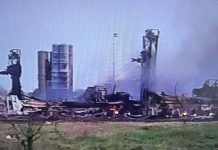As Rafale jets arrived at Ambala airforce base, entire India was celebrating. After all, it was the first introduction of a western fighter aircraft in over 20 years. However, analysts have questioned the capabilities of Rafale while comparing it to Chinese and Pakistani fighter jets.
Russian Fifth-Generation Su-57 Jets Ready To Challenge US’ F-35s, F-22s By End Of 2020
The Rafale fighter jet manufactured by Dassault Aviation took ages and a lot of controversies before they were delivered to the IAF, ahead of 15th August celebration.
In the backdrop of heightened India-China border conflict in eastern Ladakh, New Delhi is making emergency purchases. In a bid to be prepared for any further attack from China, the Indian armed forces are working on several procurement contracts for sourcing rifles, drones, and specialized ammunition.
The emergency procurement is being done not just for additional ammunition, but to rush new systems and weapons for the IAF.
Following the induction of the first five Dassault Rafale fighters, the IAF has begun practising mountain flying. In an opinion piece by Angad Singh and Harsh V. Pant, who are both associated with Observer Research Foundation, the deal for the 36 French fighters won’t change the “hard reality that, as airpower, India is falling far behind”.

The authors acknowledge that Rafale indeed provides the Indian Air Force with a complete combat capability that requires very little further tinkering but goes on to say that the limited number of order is “a bow to fiscal realities”.
The article states that the fall in squadron numbers in the Indian Air Force, which is expected to reach 30 squadrons by 2025, against a government-approved strength of 42 squadrons presents a disadvantage to India.
IAF Behind China and Pakistan in the Race?
No matter how exceptional the Rafales are or how effective its long-range weaponry is, the addition of 36 jets will not dramatically modify the balance of power in the region, the authors argue. They added that China’s Western Theatre Command has deployed around 200 fighter jets on its border with India, while Pakistan has 350 fighters that it can put up against India.
However, Chinese capabilities are hampered due to the lack of airbases close to the border with India. On the other hand, Pakistan also suffers a few operating restrictions relating to bases and aircraft performance.
“Taken together, as all worst-case Indian military planning scenarios do, the Pakistani and Chinese air forces far outnumber India’s and will continue to do so for the foreseeable future”, say the authors.
They pointed out that Pakistan and China have more aerial refuelling tankers and airborne early-warning aircraft than the Indian Air Force. “These so-called force multipliers dramatically increase the combat effectiveness of tactical fighters by extending their range or endurance and improving situational awareness in the aerial battlespace,” they wrote.
They concluded by warning that if India doesn’t keep pace with China in terms of a more “technologically centric military”, Ladakh might be the first of many territorial loses that New Delhi will have to face.





